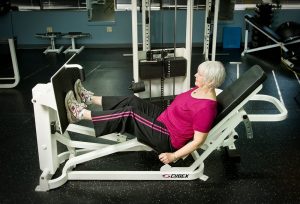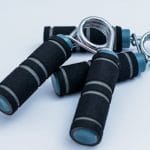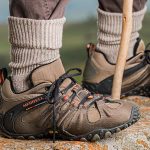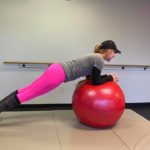
September 2021
Do Common Clinical Measurements Predict Running Injury?
Runners suffer injuries at a pretty high rate – 20%-80% have an injury at any point in time. Since running puts ~2.8 x body weight on the landing leg with each step, it makes sense that variables such as muscle strength, size, alignment, range of motion (ROM), and imbalances could factor into an athlete’s risk profile. We’ve looked at some of these here, here, here, and here. But is it so?
A study out of Ireland reviewed the injury history of 223 runners (ages 18-65) and divided them into three groups: recently injured, acquired reinjury resistance (uninjured for at least 2 years), and never-injured. All subjects were measured on bilateral and between-limb symmetry of isometric strength, (hip abduction, quadriceps, plantar flexion, hamstrings), joint motion, foot arch height, and foot posture index (FPI: degree of supination/pronation.)
The authors were befuddled by the results. They expected that asymmetries would abound, or that the injury-resistant and never-injured runners would have “potentially distinctive clinical features” that were associated with injury resistance. Other than plantar flexion and hip abduction strength, little else stood out.

Unexpectedly, plantar flexion strength was “greater among both the recently injured and acquired reinjury resistance runners compared to the never-injured.” And hip abduction strength was greater among the recently injured compared to the never-injured. This could have been a result of the therapies these athletes had previously had. Or that these might be “compensatory…[respon-ses] to injury.” Males exhibited some differences that might predispose them to injury: a greater FPI, an adverse marker; hamstring asymmetry; ankle motion; flatter arches; lower hip internal rotation. It just may be that many common clinical measures have “limited (predictive) value”.
MSSE Sept. 2021
Blood-Flow Restricted Training Helps with Knee OA
Arthritis – the wearing away of the cartilage that protects the surfaces of a joint – is a major contributor to short- and long-term healthcare costs and disability. Osteoarthritis (OA) is the kind that evolves over time from use, abuse, disuse, and time itself. OA of the knee is disabling as it progresses, altering lifestyle behaviors and recreational activities until one opts for a total knee replacement (TKR.) With that end-point in mind, anything you can do to delay the need for a TKR and still enjoy life is worth considering. Physical therapy and guided exercise programs help, but now evidence is accruing to show that blood-flow restricted (BFR) leg strengthening exercise really works.
Developed by Japanese exercise scientists in the late 1990s, BFR involves putting a blood pressure cuff on the thigh, in this case, and pumping it up until the venous blood is sufficiently occluded. Then performing quadriceps exercises to exhaustion with low resistances which won’t cause as much pain as traditional resistance training. A multi-center study found that using a load of 30% of one’s maximal lifting capacity and doing BFR (usually 2-3 sets to fatigue with each set and a 30-second rest between them) improved strength and muscle mass in a group of women with knee OA.
The 4-week study of 3/week training sessions compared a group using BFR to another that just did the same exercises – leg press and knee extensions – at the 30% load without BFR. Isotonic knee strength improved twice as much in the BFR group as the controls. There were no differences in leg press power or knee-related pain, however. Of course, STEPS was the first place in Nashville to use BFR, so give us a call after checking with your doctor.
PMR July 2015
Tid Bits
Where’s the beef? Fifty untrained middle-aged subjects did a 10-wk, thrice/weekly strength training program. They were randomized to consume either a ‘moderate’ (1.0 g/kg/d) or ‘high’ (1.2 g/kg/d) protein diet, and were even provided either 15 g or 30 g of lean beef or beef protein after each session and every evening. All participants increased upper and lower body strength…with no differences between groups. Tufts Health&Nutrition Letter June 2021
A Finnish study examined the effects of a 10-wk high-intensity strength and endurance program on strength, endurance, body composition, and hormone levels in 9 women on contraceptives (C) and 9 never having used contraceptives (NC.) They did 2 sessions/wk of intense training. Both groups increased max strength and counter-movement jump; the C improved more than the NC on the distance run. The NC group improved lean mass and lost a bit more body fat than the C, who did not alter body composition. MSSE Feb. 2021
The carbs vs fats 60 year fight continues. A review of 8 observational studies out of Europe found that replacing 5% of your caloric intake of carbs with the same number of healthy fats raised levels of ‘good’ cholesterol (HDL) and lowered the ‘bad’ cholesterol (LDLs.) “Good” fats are mono- and poly-unsaturated fats, not saturated fats such as from land animals. More specifically, replacing carbs with mono-unsaturated (vegetable oils) increased HDLs with no change in LDLs; polyunsaturated fats lowered LDLs but did not change HDL; saturated fats increased LDLs but didn’t change HDLs. If you’re going to replace carbs with fats, remember that 1 gram of carbs has 4 calories while 1 gram of fat has 9, so you have to factor in quantity in addition to quality of fats. Tufts Health&Nutrition Letter Aug. 2021















